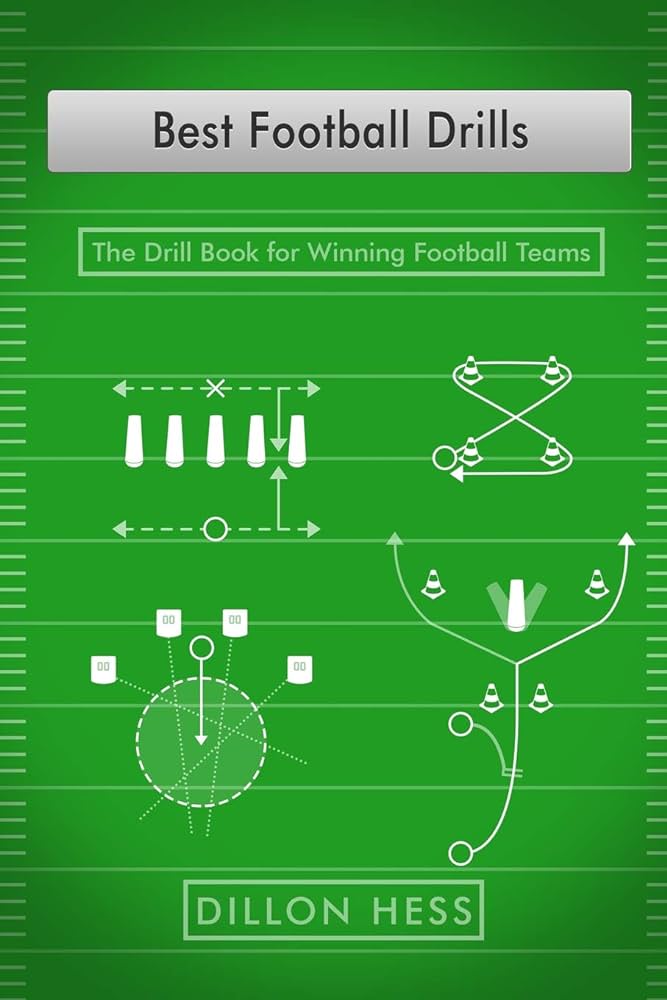Introduction
Football, or soccer, is a sport that requires a combination of physical and technical skills. For beginners, it can be challenging to develop these skills, but with the right drills and training, anyone can improve their game. In this article, we’ll provide a comprehensive guide to the best football drills for beginners, covering ball control, passing, shooting, dribbling, and game-like situations.
Ball Control Drills
Ball control is the foundation of football, and beginners need to develop this skill to succeed on the pitch. Here are some effective ball control drills for beginners:
- Dribbling Through Cones: Set up cones in a zig-zag pattern or a circle, and have players dribble through them using different parts of their foot (inside, outside, sole).
- Ball Taps: Players stand in pairs, with one player tapping the ball to the other, who then taps it back. This drill improves ball control and reaction time.
- Wall Ball: Players stand facing a wall, with a ball at their feet. They must control the ball using different parts of their foot, then kick it against the wall and control the rebound.
- Ball Control Box: Create a box using cones, with a ball inside. Players must control the ball within the box, using different parts of their foot.
Passing Drills
Passing is a crucial skill in football, and beginners need to develop the ability to pass accurately and with power. Here are some effective passing drills for beginners:
- Short Passing: Players stand in pairs, with one player passing the ball to the other over a short distance (5-10 yards).
- Long Passing: Players stand in pairs, with one player passing the ball to the other over a longer distance (20-30 yards).
- Wall Passing: Players stand facing a wall, with a ball at their feet. They must pass the ball against the wall, using different parts of their foot.
- Passing Relay: Divide players into teams of three, with one player starting at the top of a cone drill. The player passes the ball to the next player, who then passes it to the third player, and so on.
Shooting Drills
Shooting is a vital skill in football, and beginners need to develop the ability to shoot accurately and with power. Here are some effective shooting drills for beginners:
- Basic Shooting: Players stand 10-15 yards from a goal, with a ball at their feet. They must shoot the ball into the goal using different parts of their foot.
- Shooting with Pressure: Players stand 10-15 yards from a goal, with a defender applying pressure. They must shoot the ball into the goal while under pressure.
- Shooting from Different Angles: Players stand at different angles to the goal (e.g., 45 degrees, 90 degrees), with a ball at their feet. They must shoot the ball into the goal from these angles.
- Shooting Relay: Divide players into teams of three, with one player starting at the top of a cone drill. The player shoots the ball into the goal, then passes it to the next player, who shoots, and so on.
Dribbling Drills
Dribbling is a crucial skill in football, and beginners need to develop the ability to dribble with control and speed. Here are some effective dribbling drills for beginners:
- Dribbling Through Cones: Set up cones in a zig-zag pattern or a circle, and have players dribble through them using different parts of their foot.
- Dribbling Around Objects: Set up objects (e.g., small goals, cones) on the pitch, and have players dribble around them using different parts of their foot.
- Dribbling with Speed: Players stand 10-15 yards from a goal, with a ball at their feet. They must dribble towards the goal at speed, using different parts of their foot.
- Dribbling Relay: Divide players into teams of three, with one player starting at the top of a cone drill. The player dribbles through the cones, then passes the ball to the next player, who dribbles, and so on.
Game-Like Situations
Game-like situations are essential for beginners to develop their decision-making and reaction time. Here are some effective game-like situation drills for beginners:
- 2v2 or 3v3 Games: Divide players into teams of two or three, with a goal at each end of the pitch. Players must work together to score goals and defend against their opponents.
- Small-Sided Games: Divide players into teams of four or five, with a goal at each end of the pitch. Players must work together to score goals and defend against their opponents.
- Scrimmages: Divide players into teams, with a goal at each end of the pitch. Players must work together to score goals and defend against their opponents.
Conclusion
Football is a sport that requires a combination of physical and technical skills. For beginners, it can be challenging to develop these skills, but with the right drills and training, anyone can improve their game. By incorporating these drills into your training, you’ll be well on your way to becoming a skilled football player. Remember to always practice with both feet, and don’t be afraid to try new things and make mistakes – it’s all part of the learning process!
